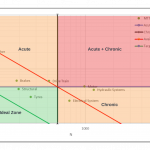
This mindset I have and bring to my client’s struggling businesses did not get built overnight. It took years of conscious concentration to develop the discipline that says basically, if something goes wrong, it was probably my fault. Either I didn’t plan or predict a problem, or I didn’t solve the problem before it happened a second time; but now the burden is on me to solve it.
Luckily I have a few tips on how to develop a self-ownership mindset.











